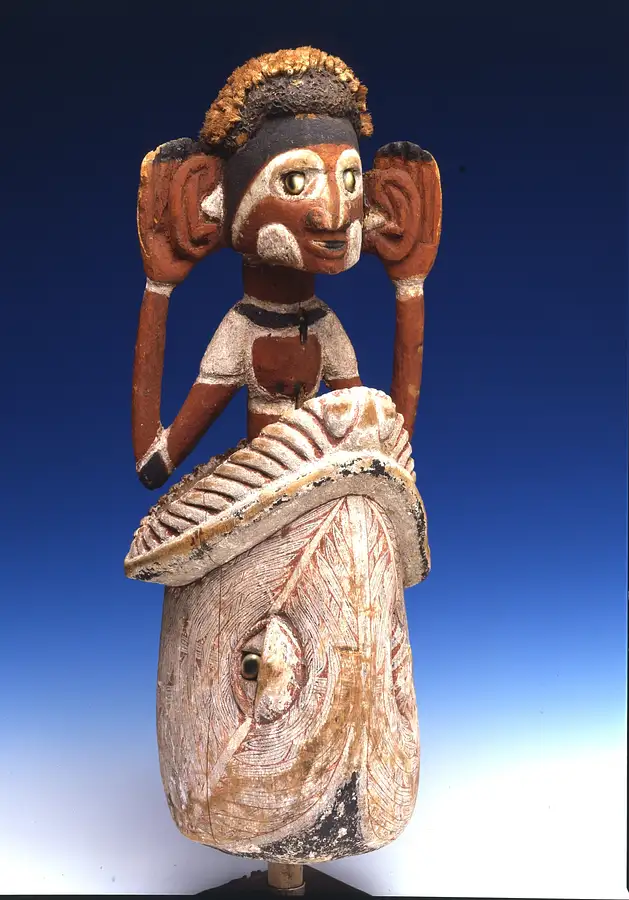
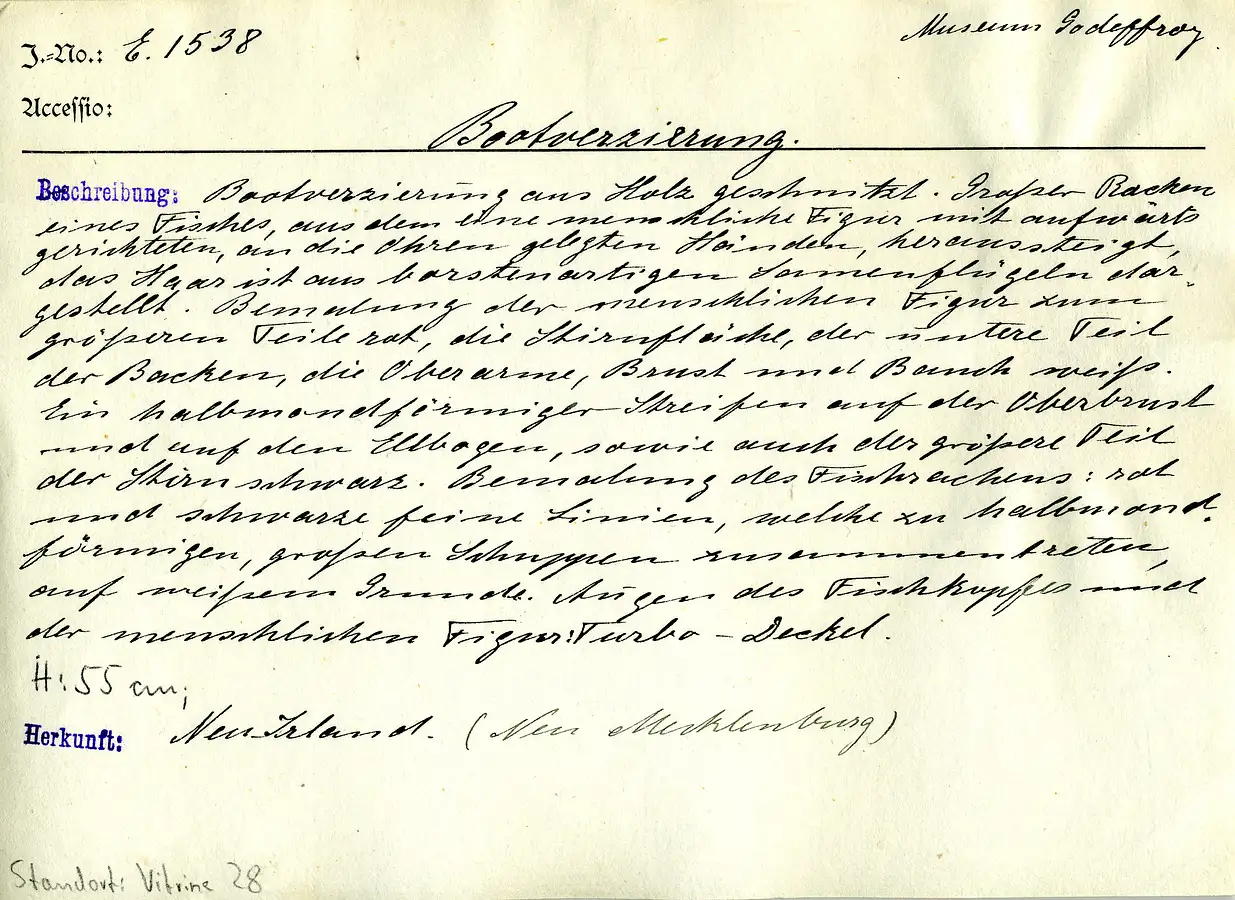
Boat ornament for a Malagan celebration. The artist's name is not on the museum archives' inventory card.
Date of production: Second half of the 19th century.
Acquisition by museum: gifted by Ruben Jonas Robertson in November 1884
New Ireland, Papua New Guinea
Wood, paint
undocumented
W 43 cm, D 14 cm, H 29 cm
E 871
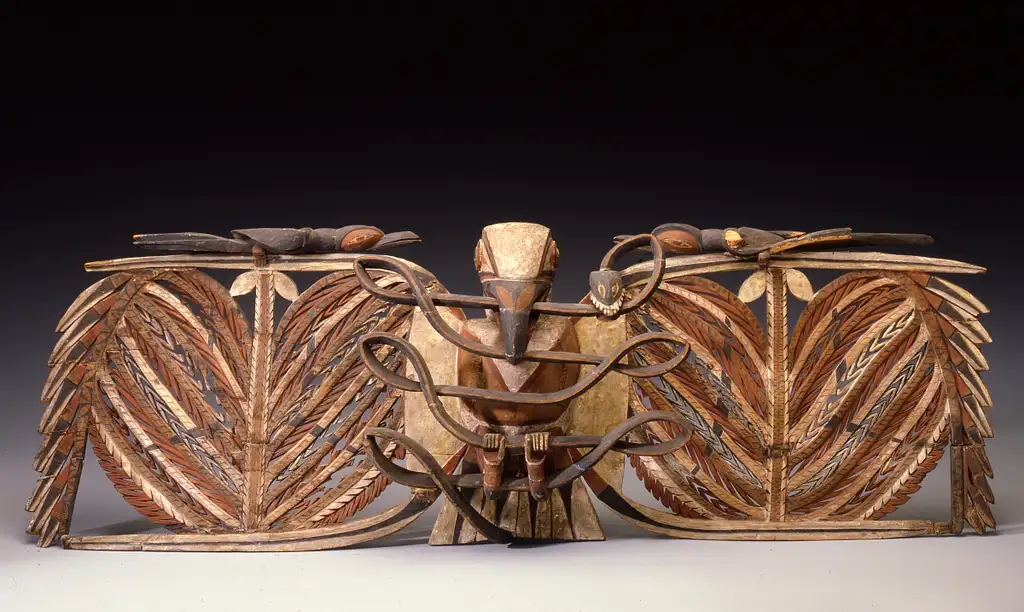
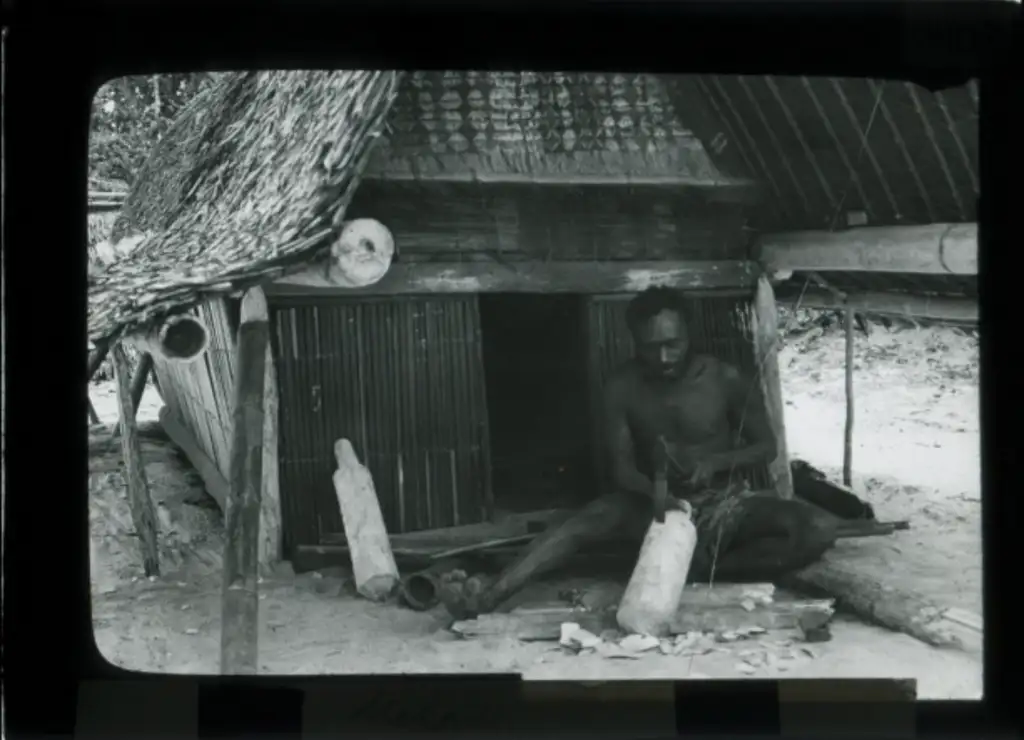


.jpg?locale=en)
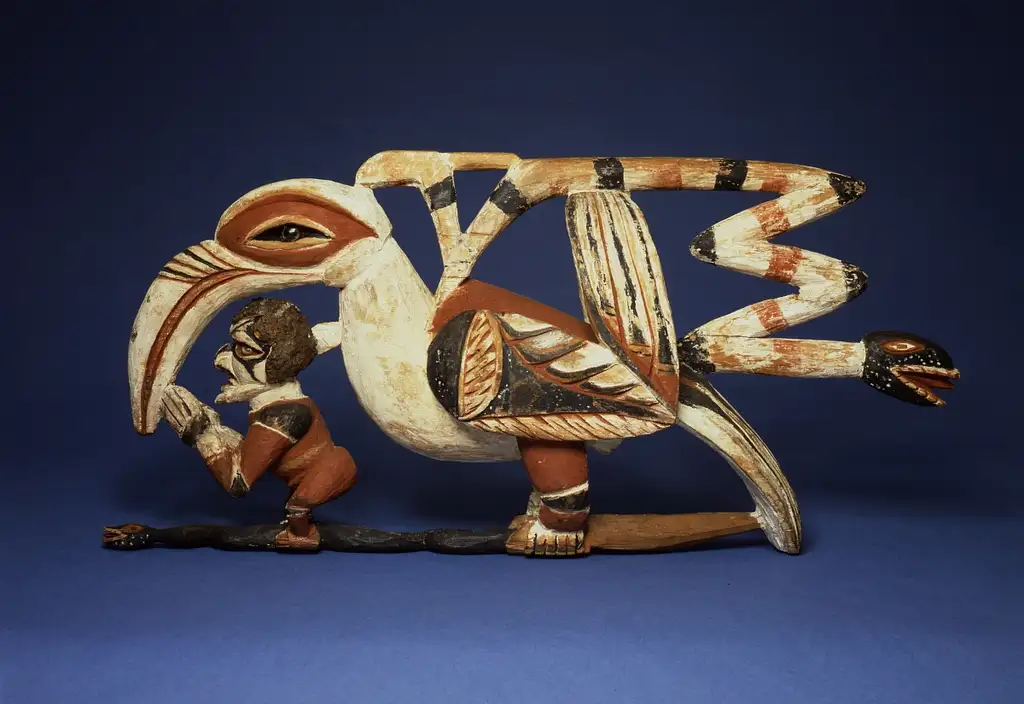
Would you like to submit a comment or other contribution regarding this story?
You can write to us and/or upload pictures, films or sound files. Here´s the form, just click on the button below and be part of tell me!
tell me